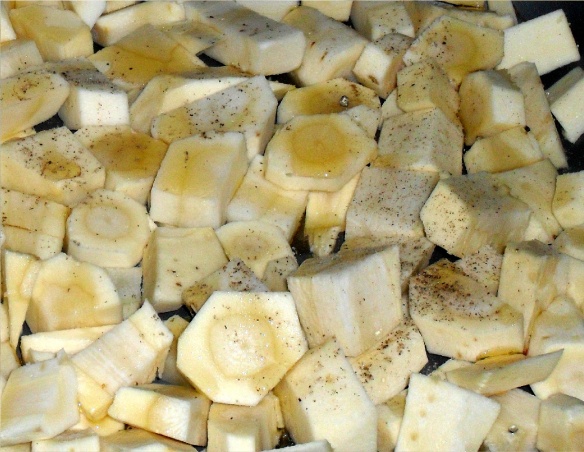
A rather spectacular Kohlrabi by Petr Kratochvil (public domain image)
Kohlrabi is a versatile member of the brassica family; in the winter, you can use it in hearty soups and stews or create a delicious mash with olive oil and salt and pepper. The summer crop of kohlrabi is less fibrous than during the winter and it is ideally suited for summer salads and kohlrabi slaw. Try adding grated kohlrabi and carrot together with a mustard dressing.
This kohlrabi soup – my own recipe – is perfect for a light lunch in the garden. The combination of peas and mint help to bring out the crisp taste of the kohlrabi, resulting in a delicious summer soup.
SUMMERY KOHLRABI SOUP
(serves 4)
Ingredients
2 tbsp good-quality olive oil
2 large onions, finely diced
3 garlic cloves, crushed
1 kohlrabi, peeled and diced
2 carrots, diced
3 heaped tbsp frozen garden peas
3.5 cups/1.5 pints vegetable stock
2 heaped tbsp chopped fresh mint
1/2 tsp dried oregano
Salt and pepper
1. Saute the onions and garlic in the olive oil for approx. 10 minutes, until they are golden.
2. Add the kohlrabi and carrots to the pan. Saute gently for 15 minutes, stirring frequently, until the vegetables are tender.
3. Add the vegetable stock and the peas. Bring to the boil, then immediately turn down the heat and let it simmer for 5 minutes until the peas are cooked.
4. Add the chopped mint, season with salt and pepper to taste and blend.









